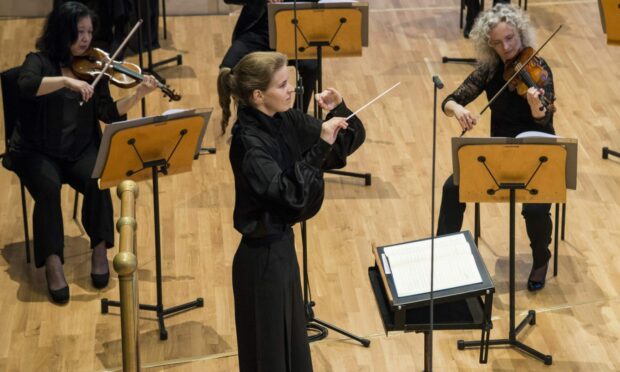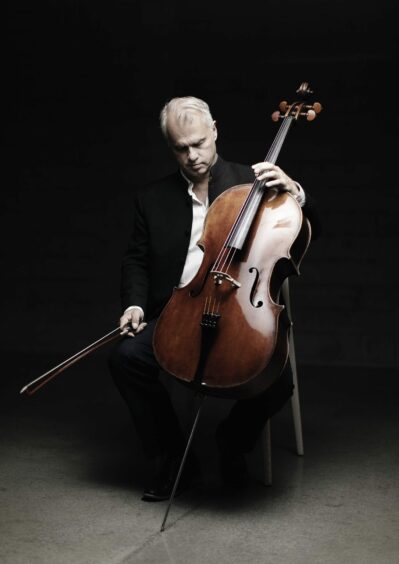To see the RSNO twice in one week is an unusual pleasure. Sunday’s concert was all about Star Wars, but the concert on Thursday in the Caird Hall also had star connections – all five of them, for this was a top-class performance.
It featured Dvorak and Sibelius, with a work by Thea Musgrave completing the set.
Her 1991 work Song of the Enchanter wasn’t out of place by any means, commissioned to celebrate the birth of Sibelius, but it fell into the rank of once heard, once forgotten.
There was a lot happening but with little or no definition. Faced with one of the great concertos of all time and a symphony that was bursting with melody and heavy substance it didn’t really stand a chance.
Contemporary and classic didn’t work
Maybe it’s just me, but coupling contemporary works with classics from the orchestral repertoire doesn’t always work, and this was one of these occasions.
With regard to Dvorak’s cello concerto, I knew some of melodies before I had heard the concerto.
The musical Summer Song, of which I have had the pleasure to perform in, features two of the major melodies in the first movement, so when I heard it for the first time it was like meeting old friends!
But Swedish cellist Torleif Thedeen took these melodies, and much more, to a higher level and to a stratosphere of undoubted brilliance.
He’s a “con gusto” type of player, who likes to put 100% of energy into the performance.
Technically superb and totally immersed in the magical content this concerto manifests his performance ranks among those of the top soloists I’ve heard, and I’ve heard plenty.
Sense of melody and subtlety
I mentioned his virtuosic qualities, but his sense of melody, his sense of subtlety and his ability send you into dreamy satisfaction stood out in the second movement, and in his encore, Pablo Casals’ Song of the Birds.
The RSNO have always had a reputation for high-quality Sibelius performances. This stems from Alexander Gibson’s iconic recordings in the 70s – recorded in the Caird Hall as it happens.
I’m glad to say this wonderful affiliation stands the test of time.
Conductor Tabita Berglund has taken a leaf out of Gibson’s book, because I thought this performance of the fifth symphony was quite outstanding.
A sort of rustic first movement, a second where the melody was tossed to and fro in some style, and a third movement in which the six-note motif is similarly spread makes for a short but totally wonderful symphony.
Only three movements? Well, it began as four but the composer amalgamated the original first with a second Scherzo.
Anyway, who really cares. Sometimes three is just as good as four.












